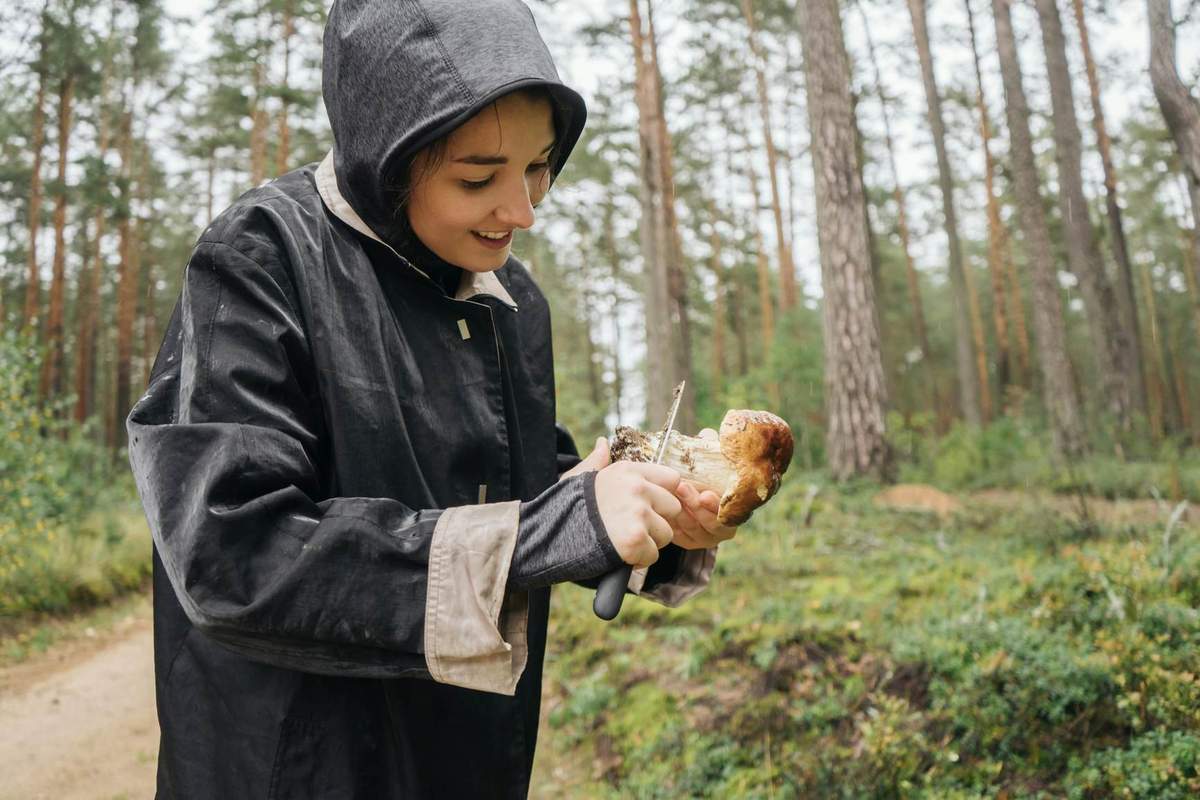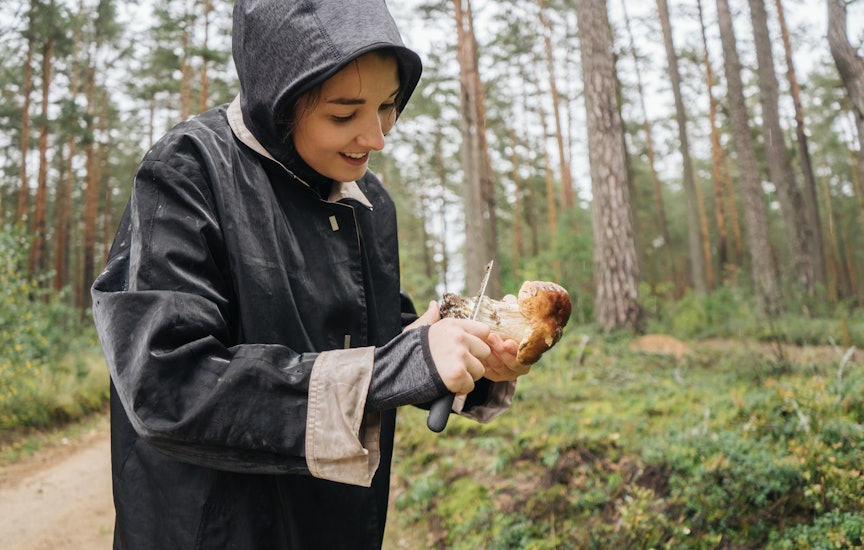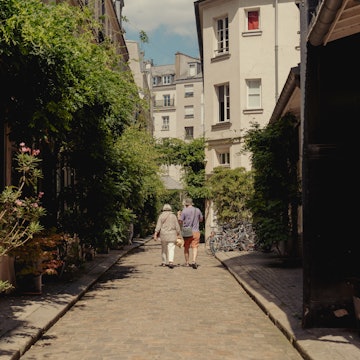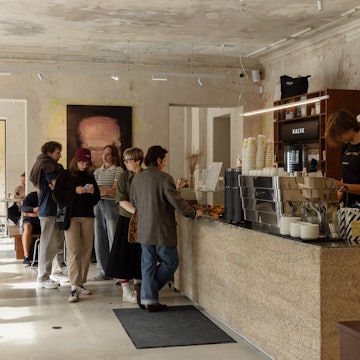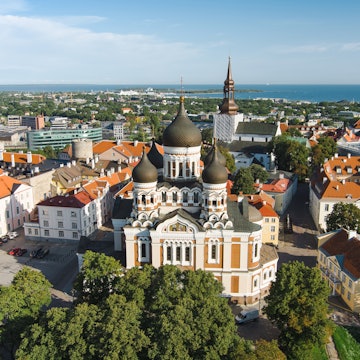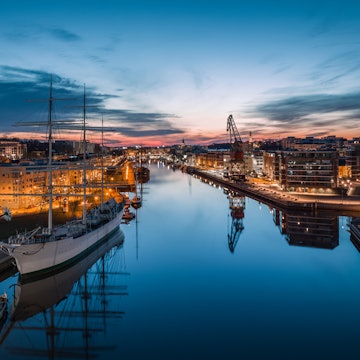

Old Town Tallinn, Estonia. LN team/Shutterstock
Sitting side by side in a forested corner of northeastern Europe surrounded by the cool waters of the Baltic Sea, Estonia, Latvia and Lithuania tend to be grouped together due to their geographical proximity, friendly relations and shared history of foreign rule and journey to independence. Yet the three Baltic States couldn’t be more diverse.
As you cross borders starting from Lithuania, the last country in Europe to adopt Christianity, you’ll encounter remnants of the Polish-Lithuanian Commonwealth, manor houses owned by German nobility, onion-domed Russian Orthodox churches, Swedish cemeteries and Hanseatic League merchant palaces testifying to the strategic importance of the region.
Besides history, expect wild nature. Estonia, Latvia and Lithuania are sparsely populated, and much of their territories are covered in thick forests, bogs and glacial lakes. Thousands of islands spill off the rugged coast, offering opportunities for detours with a well-organized ferry system operating in the warmer months.
This road trip route starts in Vilnius and ends in the historic city of Tallinn, covering over 1000km (621 miles). Each stage of driving takes around two to three hours. While you can technically travel between capital cities in a single day, plan to spend 10 days to two weeks to take it all in.

Lithuania: Vilnius, Kaunas, Klaipėda, Curonian Spit and Palanga
The UNESCO-inscribed Old Town of Vilnius – Lithuania’s capital and starting point of this road trip – is as easily walkable as it is layered. Gothic, neoclassical and contemporary architecture blend with the Vilnian Baroque buildings that characterize the historic heart of the city, which developed as a multicultural location during the Polish–Lithuanian Commonwealth era.
But Vilnius is not all about the past. It has emerged as one of northern Europe’s primary tech hubs and was named European Green Capital 2025 for its efforts to become climate-neutral in the next decade.
Climb Gediminas Hill to visit the restored Gediminas Castle Tower – the last surviving defensive tower of the 15th-century fortress that once protected Vilnius – for a bird’s-eye view of Old Town. Then visit the reconstructed Palace of the Grand Dukes, the administrative center of both the Grand Duchy of Lithuania and the Polish–Lithuanian Commonwealth, before moving on to the quarter of Užupis.
It was here that a group of artists jokingly decided to proclaim their independence, going as far as to draw up a mock constitution for their republic. The Lithuanian government has since gone along with the joke, allowing Užupis to remain independent, although the status is in name alone. Many contemporary art galleries, artisan workshops and the TARTLE Art Center dot the area.
From Vilnius, make a brief stop 100km (62 miles) away in Kaunas, Lithuania’s second largest city and European Capital of Culture for 2022. Kaunas Castle offers an insight into the country’s past, and the Museum of Devils, packed with masks and stories, outlines local traditions and folklore.
Kaunas Old Town is surrounded by a vast collection of modernist buildings that have entered the UNESCO World Heritage list under the name of “Architecture of Optimism.” Pick up a paper map at the tourism information center (or in most hotels) and follow the trail of structures built when Kaunas became Lithuania’s provisional capital, between WWI and WWII.

Drive onwards to Klaipėda, which has a quiet and unassuming beauty. An important point on several trading routes, this is one of the many Baltic cities that bears the mark of European merchants, especially those of German and Dutch descent. From here, take a ferry to the Curonian Spit, which separates the Curonian Lagoon from the Baltic Sea. In the bewitching Curonian Spit National Park, also a UNESCO World Heritage site, you’ll find sand dunes, pine forests and fishing villages. You can make this a day trip, but if you're keen to explore in depth, allow three days here.
The coastal city of Palanga is roughly 30km (18 miles) from Klaipėda. It’s a popular destination for a day at the beach on the Baltic Sea, so expect the pier and cozy streets to be flooded with people during the summer.
Entering Kaliningrad: Lithuania borders the Russian exclave of Kaliningrad. Currently, car traffic between the two countries is closed, but it is possible to cross the border across the Nemunas River at Panemunė-Sovetsk, provided you have a valid Russian tourist visa.

Latvia: Kuldīga, Ventspils, Rīga and Gauja National Park
From Palanga, continue along the coast and cross the border into Latvia and make your way inland to historic Kuldīga. Dating back to its prominence as an administrative center for the Duchy of Courland and Semigallia (late 16th–18th centuries), Palanga’s well-preserved streets showcase a fascinating blend of architectural styles preserved from the city’s golden age. Imagine the Baltic winds carrying ideas and aesthetics, leaving their mark in a unique fusion born from the cultural exchange that happened as the city emerged as a key trading and political center.
About 200km (124 miles) further on you’ll encounter Ventspils, a classy coastal city drenched in Latvia’s past. Visit Livonian Order Castle, which has a local history and art museum. And for something unusual, tour the city’s colorful cow sculptures. Ventspils holds a special place in the bovine art world, having twice played host to the international CowParade public art show. While the main herd moved on after each event, a quirky dozen decided to stay, continuing to decorate the city’s streets.
It’s approximately 190km (188 miles) from Ventspils to Latvia’s capital city, Rīga. Stop at the Baltic resort town of Jūrmala before entering the cool and endlessly busy capital, a hotbed of activity at any hour. Bars, coffee houses, theaters and a thriving live music scene offer plenty of entertainment.
Rīga Cathedral is the largest medieval church in the Baltics, and historic Rīga Castle was first established in 1330. Get to the Town Hall square to admire the iconic House of the Blackheads, built in 1344 as the headquarters of the guild of unmarried German merchants. The original building was damaged during WWII and replaced with an exact replica in 2001. Continue to Alberta Iela to check out the Art Nouveau facades of the palatial residences and be sure to grab some food for the road at Rīga Central Market.

Northeast of Rīga is Gauja National Park, Latvia’s oldest and largest nature reserve, accessible via Sigulda. A castle once belonging to the Livonian Order stands in Sigulda on the park's eastern edge. From there, the visitor center at Gutman's Cave is a short distance away. Enter the forested grounds of the Gauja Valley and take a stroll along the sandstone outcrops that drop into the river. Trail options include short hikes to multi-day circuits.
Eastern detour: With more time on your hands, you can cross the entirety of Latvia, returning to the capital before heading north. In the south, visit the regal Rundāle Palace, built in the 18th century for the Dukes of Courland. On the opposite side of the country, in the industrial city of Daugavpils, find the Mark Rothko Museum, dedicated to the celebrated abstract artist who was born here in 1903.

Estonia: Kabli, Pärnu, Haapsalu and Tallinn
As you enter Estonia, you’ll leave behind the Indo-European languages of Lithuania and Latvia and start hearing the Finno-Ugric Estonian tongue. On the coast, cross the border and stop for a night at the Kosmonautika Holiday Centre near Kabli, where Soviet cosmonauts were sent to recover after space missions.
Continue to Pärnu, a favored summer destination. It’s graceful, classy and popular with local and international tourists. Relax in cafés, stroll cobblestone streets and enjoy dune-covered beaches. If you need a break from the crowds of holidaymakers, take a trip to the boggy Soomaa National Park, 40km (25 miles) from Pärnu, famous for its fifth season in spring when rain floods the landscape and the park transforms.
Further north in Haapsalu, one of the most striking castles of the Baltics awaits. The charming spa town was renowned as a wellness center among the Russian elites in the Empire era, and many resorts continue to dot the coast – stop for lunch at the Haapsalu Kuursaal for a glimpse of past opulence. Haapsalu is also where the lost minority of Estonian Swedes lived before escaping to Sweden during WWII. The small Museum of the Coastal Swedes traces their story.
Tallinn is a stylish and lively place. The city’s medieval core, enclosed within high defensive walls, owes much of its charm to the Hanseatic League merchants who transformed it into one of the main commerce hubs on the Baltic Coast during the Middle Ages.

Visit the Gothic Town Hall, which dominates Town Hall Square, or stop by graceful Alexander Nevsky Cathedral, an onion-domed Russian Orthodox cathedral sitting atop Toompea Hill. The city’s relationship to the sea is well represented in the Estonian Maritime Museum, next to the defensive tower known as Fat Margaret, where a Hanseatic shipwreck is on display. In the museum’s extension at Seaplane Harbour, you can enter the Lembit, the only surviving Estonian submarine built before WWII.
For a taste of traditional rural life, drive out to the Estonian Open-Air Museum to visit historic buildings and try your hand at blacksmithing and weaving. Or take a day to explore the Lahemaa National Park, where bogs, thick forests, fishing villages and German manor houses dot the landscape.
To the islands: From Estonia’s coast, you can easily reach many islands of Western Archipelago. The port of Munalaiu, north of Pärnu, links to Kinhu, while Rohuküla connects to the biosphere reserve of Hiiumaa and Vormsi, where traces of the Estonian Swedes community are still visible. Muhu and Sareemaa are accessible via Virtsu. Multiple ferries depart each day from Tallinn to Helsinki, taking only a couple of hours to get to the Finnish capital.

Driving in the Baltics
Roads in the Baltic States are well maintained for the most part. Be sure to drive on the right. Traffic jams are infrequent, especially outside of main cities, and you’ll find plenty of parking spaces in cities at both private parking lots and street meters.
Keep in mind that snow and ice are frequent in winter, and daylight hours are limited. Make sure to check road conditions if you are planning to drive in wintertime, especially in rural areas. When sub-zero temperatures hit for a prolonged time, ice roads form in Estonia, allowing driving to some islands over frozen water.
All major car rental operators have offices in Vilnius, Rīga and Tallinn. Keep in mind that you will have to pay an additional fee on top of the rental price to cross the borders.

Traveling the Baltics by rail
The recent introduction of a coordinated train schedule by the national railway operators of Lithuania (LTG Link), Latvia (Vivi) and Estonia (Elron) has made it possible to travel between the Baltic capitals – Vilnius, Rīga and Tallinn – within a single day.
This marks a big step forward in the region’s connectivity, as previously such a journey would have taken much longer. Since February 2025, the route features just one transfer at Valga, the border town between Latvia and Estonia. To travel across the three countries, you can now buy a single ticket (starting at €39; US$44). The train departs Vilnius in the early morning, arrives in Riga around midday and reaches Tallinn in the late afternoon.
Similarly, a return journey from Tallinn to Vilnius is also possible within the same day. This new rail connection serves as a precursor to the ambitious Rail Baltica project, which aims to build a high-speed railway linking the Baltic States with the rest of Europe.






